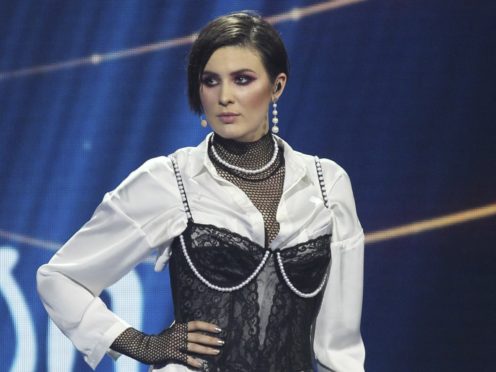Ukraine’s entry for the Eurovision song contest is in jeopardy after the national broadcaster told the performer who won the right to represent her country to choose between the nomination and concerts in Russia.
Controversy erupted shortly after 27-year-old singer Anna Korsun, who performs under the name Maruv, won the nomination to be Ukraine’s entry in the annual competition.
Several Ukrainian politicians said Maruv should not be allowed to represent Ukraine because she often tours in Russia.
The Ukrainian National Public Broadcaster said that Maruv was offered a contract which temporarily bars her from playing in Russia and that she has 24 hours to sign it.
Maruv said on Facebook that she “feels the pressure” from the ultimatum and that the organisers are “trying to steal our victory from us”.
She said she was willing to cancel the shows in Russia but raised a number of concerns about the contract.
Her ties to Russia have become a toxic issue given the elevated tensions between the two countries ever since 2014, when Russia annexed the Ukrainian Crimean peninsula and threw its weight between separatists in the east.
🎉 42 countries will #DareToDream in Tel Aviv for Eurovision Song Contest 2019! pic.twitter.com/JJpX8v7x86
— Eurovision (@Eurovision) November 7, 2018
Despite the furore surrounding Maruv’s victory, it is not unusual for Ukrainian singers and bands to perform in Russia.
Maruv was grilled about her Russian shows during the national finals in Kiev over the weekend.
Similarly, another entry, twins from Crimea, were put on the spot by the host and asked whether they consider Crimea to be part of Ukraine.
“Depending on your answer, you can either bury your own career or that of your mother,” the host said, referring to the women’s mother, who is a judge in the Russia-controlled Crimea.
One of the sisters was brought to tears and said she would always stand by her parents if she were forced to choose between them and her career.
The Ukrainian Culture Ministry has also weighed in, saying that only “patriots who are aware of their responsibility” should be allowed to sing for Ukraine at the annual pop contest while “thousands of heroes are dying for Ukraine’s territorial integrity”.
Eurovision has often become the pan-European platform for settling scores between countries.
When Ukraine was hosting the competition in 2017, it refused to allow Russia’s performer to enter the country because she had performed in Crimea without the permission of the Ukrainian government.
A year earlier, Ukrainian singer Jamala angered Russia by performing 1944, a song about war-time deportations of Crimean Tatars from Crimea by Soviet leader Joseph Stalin.
In 2009, the European Broadcasting Union blocked the Georgian entry We Don’t Wanna Put In – interpreted as a clear dig at Russian President Vladimir Putin.
